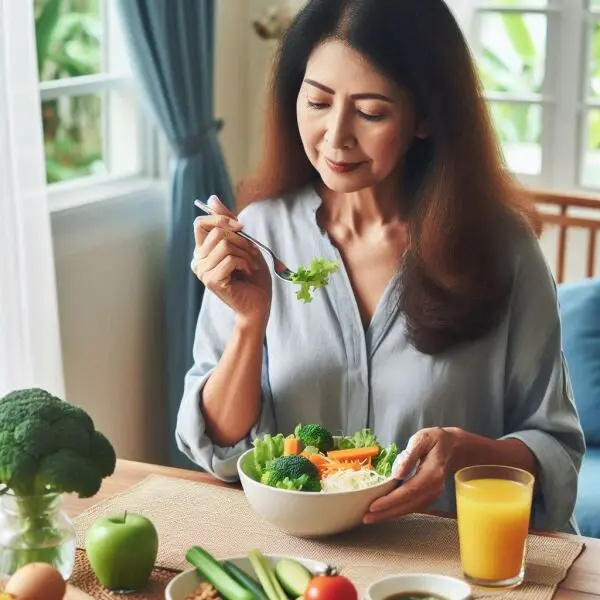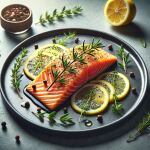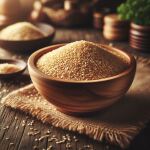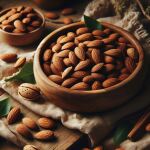Foods to Avoid to Live Longer and Prevent Diseases, According to Harvard Scientists
Harvard reveals which foods to avoid to live longer and reduce chronic risks. Key points: more fruits and vegetables daily. Discover the list recommended by GQ....
Table of Contents
- Eating to Add Years (and Life): What Harvard Highlighted
- The 7 Daily Allies That Add Healthy Years
- The 5 That Subtract (better reduce)
- How to Apply It Today: Menu, Habits, and Mindset
Follow Patricia Alegsa on Pinterest!
Eating to Add Years (and Life): What Harvard Highlighted
GQ picked up a key point from Harvard University: it’s not enough to live longer, you have to live better. The diet you choose every day pushes your aging in one direction or another. And yes, it sounds obvious… but when you apply it, everything changes.
As a psychologist and communicator, I see it every week: those who adjust their food and movement regain energy, mood stability, and mental clarity. I’m not talking about “miracle diets.” I’m talking about consistency and a well-assembled plate.
Harvard sums it up with two very practical ideas:
- Prioritize plants daily.
- Make small, sustained changes. Mini-habits win the race.
A nerdy fact I love: the Alternative Healthy Eating Index (AHEI), developed at Harvard and cited by GQ, scores the quality of what you eat and is associated with lower disease risk and more healthy years. It doesn’t require veganism. It asks that most of your calories come from vegetables, fruits, whole grains, and good fats. The rest, in moderation.
The visual rule I teach in my workshops? The “Harvard plate”: half vegetables and fruits, one quarter whole grains, one quarter quality proteins, and water as the base drink. Easy, visual, and no excuses 🙌
Do you know the Okinawa diet to live more years with excellent health?
The 7 Daily Allies That Add Healthy Years
Here’s the map with examples, portions, and why they work. If it helps you, print this out on your fridge.
- Fruits (2–4 servings/day): berries, citrus fruits, apple, papaya. They provide fiber, vitamin C, and polyphenols that protect neurons. Fun fact: a study in older adults associates flavonoids from berries with better memory.
- Vegetables (3–5 servings/day, at least 1 dark leafy green): spinach, broccoli, carrot, pepper. Their antioxidants calm inflammation. Leafy greens provide natural nitrates that support vascular health and cognitive performance.
- Whole grains (3 servings/day): oats, brown rice, quinoa, 100% whole grain bread. They provide stable energy, increase satiety, and protect the heart. Tip: look for “100% whole grain” on the label.
- Legumes (½ cup/day or 3–4 times/week): lentils, chickpeas, beans. Plant protein, iron, and fiber. Your microbiota loves them: they produce butyrate, a fatty acid that lowers inflammation. If they cause bloating, soak them and start with small amounts.
- Nuts (a handful/30 g daily): walnuts, almonds, pistachios. Good fats + magnesium for the nervous system. Pro tip: store them in individual portions to avoid “self-sabotage” while watching a series. You can read: How much nuts is enough for me?
- Unsaturated fats: extra virgin olive oil (2–3 tablespoons/day), avocado, seeds; oily fish twice a week. Omega-3s that protect brain and heart. The Mediterranean diet stands out here for a reason.
- Low-fat dairy (in moderation) (1–2 servings/day): natural yogurt, kefir, fresh cheeses. They support bones and muscles. If you don’t tolerate lactose, kefir usually goes down better. Plant-based alternatives are fine but enriched with calcium and without added sugars.
Mini shortcut for reference: aim for 25–30 g of fiber/day. If you really eat plants, you’ll get there. Your gut will applaud you (and your mood too, because gut and brain send messages all day).
The 5 That Subtract (better reduce)
I don’t demonize foods, but I do the excess. These five accelerate wear if you make them routine:
- Sugary drinks: sodas and industrial juices spike glucose. Switch to cold water with lemon or unsweetened iced tea. My patient Mariela just swapped soda for sparkling water + citrus slices; in 6 weeks she reduced sweet cravings and improved her blood pressure.
- Excess red meat: choose lean cuts and small portions; keep barbecues as an event, not Monday to Friday.
- Trans fats and frequent fried foods: instant inflammation. Read labels: if you see “partially hydrogenated oils,” skip it.
- Excess salt: your palate adapts in 2–3 weeks. Use herbs, pepper, citrus. Useful trick: try the “invisible salt shaker”; remove it from the table.
- Processed meats (cold cuts, sausages): high in sodium and additives. Use them as an exception, not a fixed breakfast.
As I say in my talks: what you eat every day builds you; the occasional doesn’t define you. And yes, not even Mercury retrograde can sabotage a well-made salad 😅
This delicious food will let you live 100 years!
How to Apply It Today: Menu, Habits, and Mindset
Here’s a simple outline to start without drama. The goal: consistency.
- Breakfast: oats with berries and nuts + yogurt/kefir. Coffee or tea without sugar. If you’re in a hurry, spinach smoothie with small banana, peanut butter, and unsweetened plant milk.
- Lunch: ½ plate vegetables (raw or sautéed), ¼ quinoa or brown rice, ¼ protein (fish, legumes, tofu, chicken). Olive oil + lemon. Water.
- Snack: fruit + handful of nuts, or hummus with carrot.
- Dinner: lentil soup with vegetables and greens, or a complete salad with chickpeas and avocado. If you eat meat, small portion and let plants dominate the plate.
Habit psychology tricks (what works with my patients):
- Plan before hunger hits. Hunger + tiredness = impulsive decisions.
- 30-minute prep on Sunday: wash greens, cook a pot of legumes, portion nuts.
- The 1% rule: improve 1% this week (more water, one extra fruit, walk 10 minutes). Compound sum works magic.
- Eat earlier when possible. A 12-hour overnight fast (e.g., 8 PM to 8 AM) helps insulin sensitivity in many people.
- Measure what matters: fiber, veggies per day, steps. Don’t chase the scale daily; chase behaviors.
A consultation anecdote that marked me: Don Leo, 72 years old, came exhausted with high lipids. I didn’t send him to live at the gym. I proposed two changes: vegetable soup with legumes three nights a week and 20-minute walks after dinner. In three months: better sleep, lower triglycerides, and a mood that not even the noisy neighbor could break. Small steps, big effect.
I’ll close with this: your plate doesn’t just give you calories; it trains your cells, calms inflammation, and protects your brain. If you choose well most days, you gain independence, energy, and that glow of “I feel good in my skin.” And that, believe me, is worth gold.
If you have a medical condition, adjust with your trusted professional. And if you need a push, I’m here. Shall we start today? 🌱💪
If you have a medical condition, adjust with your trusted professional. And if you need a push, I’m here. Shall we start today? 🌱💪
Subscribe to the free weekly horoscope
Aquarius Aries Cancer Capricorn Gemini Leo Libra Pisces Sagittarius Scorpio Taurus Virgo
-
 Omega-3: The Unexpected Ally Against Prostate Cancer
Omega-3: The Unexpected Ally Against Prostate Cancer
Omega-3 to the Rescue! Incorporating fish into your diet could slow down prostate cancer. A small change with a big impact. -
 Benefits of sesame seeds: how many should you consume per day?
Benefits of sesame seeds: how many should you consume per day?
Sesame seeds are rich in nutrients such as calcium and healthy fats. Add them to salads, smoothies, or bread. -
 Eat an egg a day: nutritional hero or cholesterol villain?
Eat an egg a day: nutritional hero or cholesterol villain?
One egg a day? It's no longer the cholesterol villain! Science now praises it for its benefits. ?? What do you think? -
 5 natural strategies to effectively overcome cravings
5 natural strategies to effectively overcome cravings
Discover how small adjustments in your diet and daily routine can activate the GLP-1 hormone, helping you control your appetite and naturally reduce cravings. -
 Improve Your Sleep: How Room Temperature Affects Your Rest
Improve Your Sleep: How Room Temperature Affects Your Rest
Discover how the temperature of your room influences the quality of your sleep. Enhance your nightly rest by adjusting your environment. Sleep better today!
I am Patricia Alegsa
I have been writing horoscope and self-help articles professionally for over 20 years.
Subscribe to the free weekly horoscope
Receive weekly in your email the horoscope and our new articles on love, family, work, dreams and more news. We do NOT send spam.
Astral and numerological analysis
-
 Discover your future, secret personality traits and how to improve in love, business and life in general
Discover your future, secret personality traits and how to improve in love, business and life in general
-
 Online Dream Interpreter: with artificial intelligence
Do you want to know what a dream you had means? Discover the power of understanding your dreams with our advanced online dream interpreter using artificial intelligence that responds to you in seconds.
Online Dream Interpreter: with artificial intelligence
Do you want to know what a dream you had means? Discover the power of understanding your dreams with our advanced online dream interpreter using artificial intelligence that responds to you in seconds.
-
 9 Expert Keys for Deep and Restorative Sleep
9 Expert Keys for Deep and Restorative Sleep
Discover 9 expert keys for uninterrupted sleep. Small changes in your habits can transform your rest into a restorative experience. -
 Why Does Cold Depress Us? Effects on Health, Mood, and How to Improve Them
Why Does Cold Depress Us? Effects on Health, Mood, and How to Improve Them
Did you know that the cold can disrupt your hormones and mental health? Come in and discover the secrets to combat seasonal depression, stay active, and enjoy the season. Don't let the cold freeze your spirits! -
 Erectile Dysfunction: More Than a Sexual Problem, A Warning Sign
Erectile Dysfunction: More Than a Sexual Problem, A Warning Sign
Discover the truth behind erectile dysfunction: a warning sign from the body. It is the most common sexual dysfunction in Spain, but fear prevents its treatment. -
 Live to be 120 years old: how to achieve it without spending millions
Live to be 120 years old: how to achieve it without spending millions
Millionaire Bryan Johnson spends 2 million dollars a year on his health to live up to 120 years old. I will show you what he does and how you can do it for much less money. -
 The Secret of Longevity: Lifestyle is More Important than Genes
The Secret of Longevity: Lifestyle is More Important than Genes
Surprise! Lifestyle surpasses genes in health and aging, reveals study with half a million people. Goodbye, dementia and heart problems! -
 The benefits of quitting alcohol for just one month
The benefits of quitting alcohol for just one month
A month without alcohol surprises: it improves the liver, reduces the risk of cancer, and balances emotions. Your body will thank you! -
 Surprising health benefits of almonds
Surprising health benefits of almonds
Discover why almonds are a superfood: they improve cardiovascular health, aid digestion, and beautify the skin. Incorporate this nutritious nut! -
 Scientists revive pig brain after death
Scientists revive pig brain after death
Scientists in China revive pig brain after an hour of its death, a promising advancement for restoring vital functions after cardiac arrests. -
 The Bloody Funeral of Genghis Khan: Unleashed Mystery and Violence
The Bloody Funeral of Genghis Khan: Unleashed Mystery and Violence
Discover the bloody funeral of Genghis Khan: a burial filled with eccentricities and hundreds of murders to keep its secret. A terrifying and mysterious event! -
 What does it mean to dream of counterfeit money?
What does it mean to dream of counterfeit money?
Discover the meaning behind your fake money dreams in this article. Could it be a scam alert or just a signal from your subconscious? Read more to find out! -
 How to lose weight with the Mediterranean diet? Experts answer your questions
How to lose weight with the Mediterranean diet? Experts answer your questions
Discover how the Mediterranean diet can help you lose weight and improve your health. -
 This is the best versus the worst thing about being friends with each zodiac sign
This is the best versus the worst thing about being friends with each zodiac sign
What's the best, what's the worst, about being friends with each of the zodiac signs. -
 The secret to free yourself from anxieties according to your zodiac sign
The secret to free yourself from anxieties according to your zodiac sign
Discover how to disconnect from routine according to your zodiac sign and enjoy a unique escape from reality.